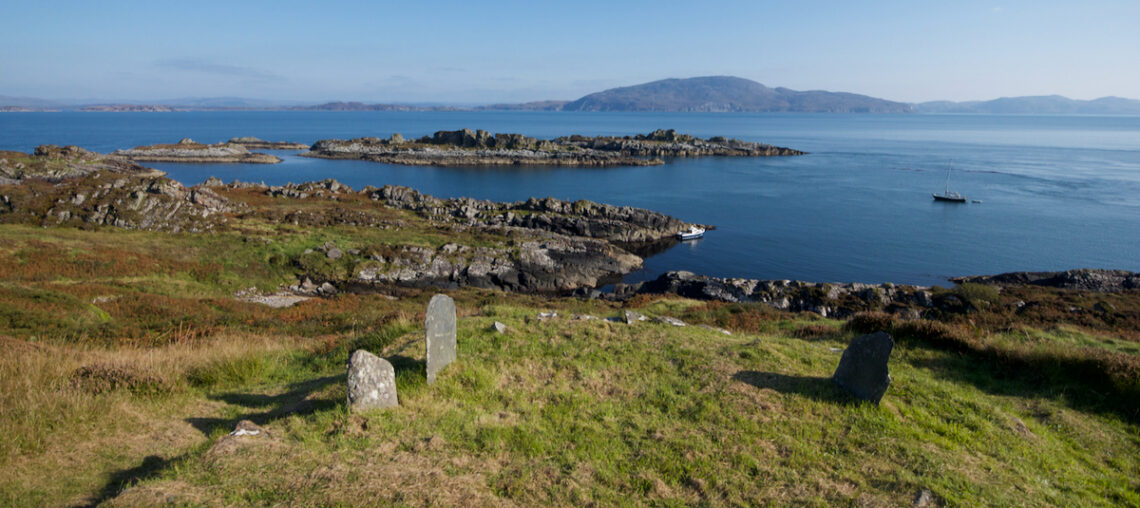
Back to the Garvellachs
One of the last Sundays in September, and it was fine and warm, with the mellow blue sky that comes with autumn and scarcely a breath of wind to disturb the dead leaves that were clattering down from the trees.
We had a last-minute invitation to join a small group on Farsain, which was heading out to sail round Scarba. No need to think long about that, and by early afternoon we were motoring down the long coast of Luing with its green fields and patches of birch woodland.
We paused to watch a party of seals, chiefly mothers with their pups, hauled out on some rocks and enjoying the sun; and then crossed over to the north end of Jura, keeping a look-out for eagles while skimming over the deceptively serene waters of the Corryvreckan – muted because of the tide but fascinating nonetheless, with a sense that some unseen amphibious monster was slumbering far below.
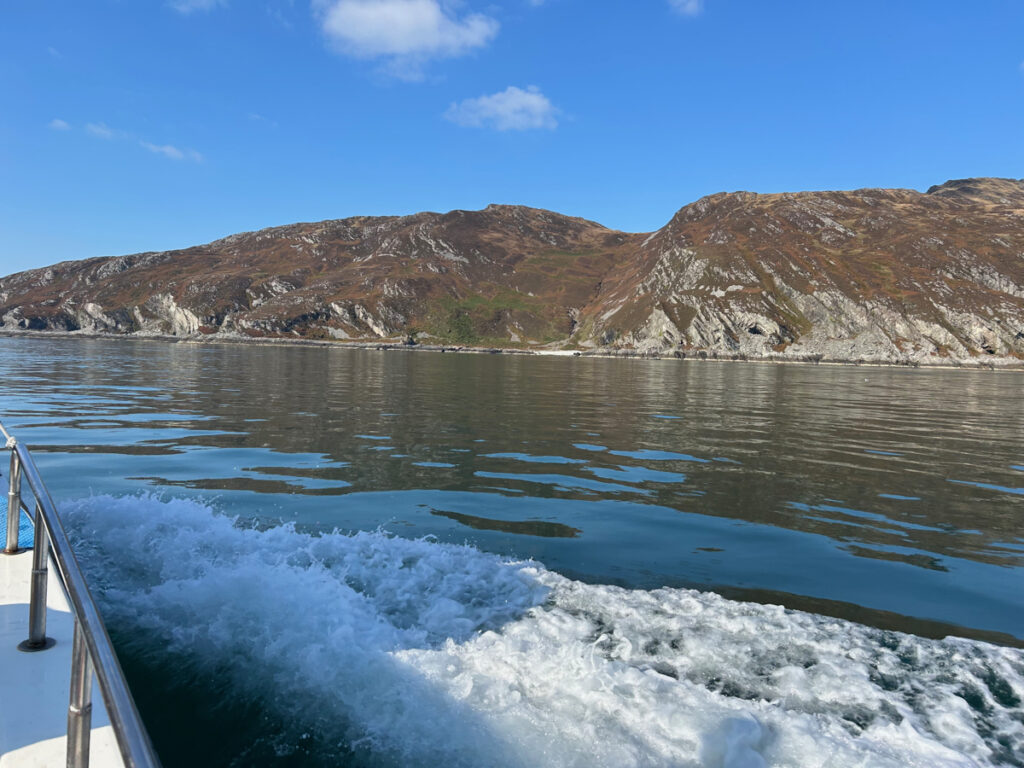
Around the ‘back’ of Scarba, as we scanned the sea for dolphins and porpoises, Tony asked if we’d like to pay a quick visit to the Garvellachs. How could anyone say no to that? In less than half an hour we were there, tying up alongside the lumpy, barnacled rocks of Eileach an Naoimh and scrambling ashore, only half-listening to Tony’s parting observation that he was putting the kettle on and we couldn’t be too long.
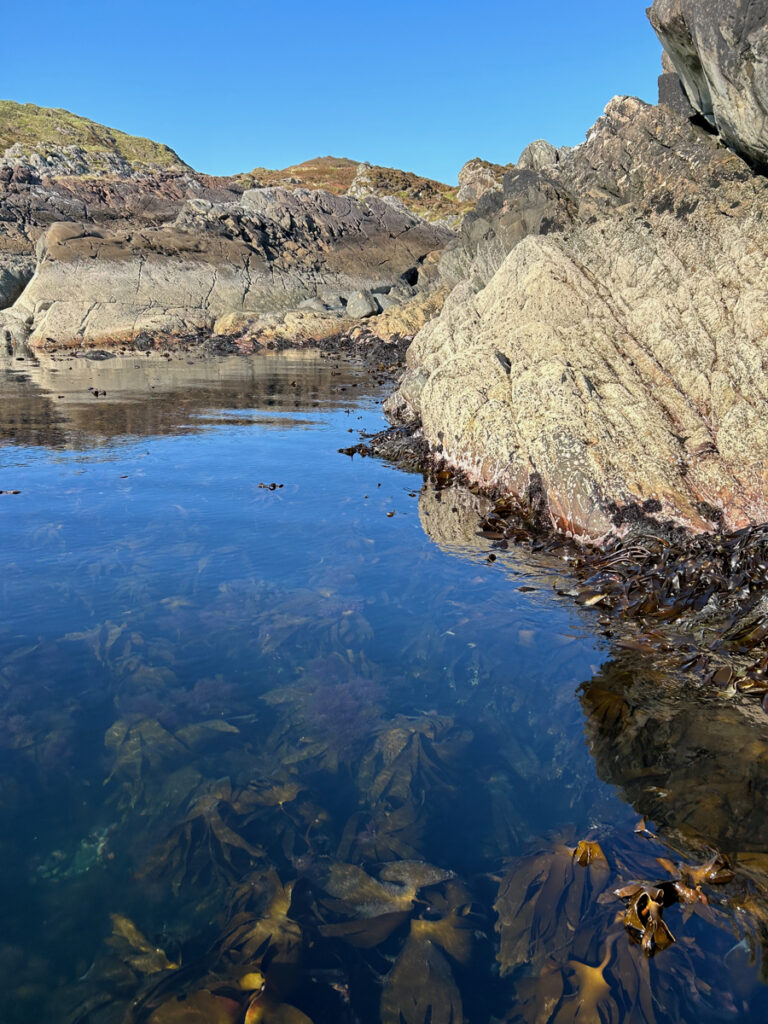
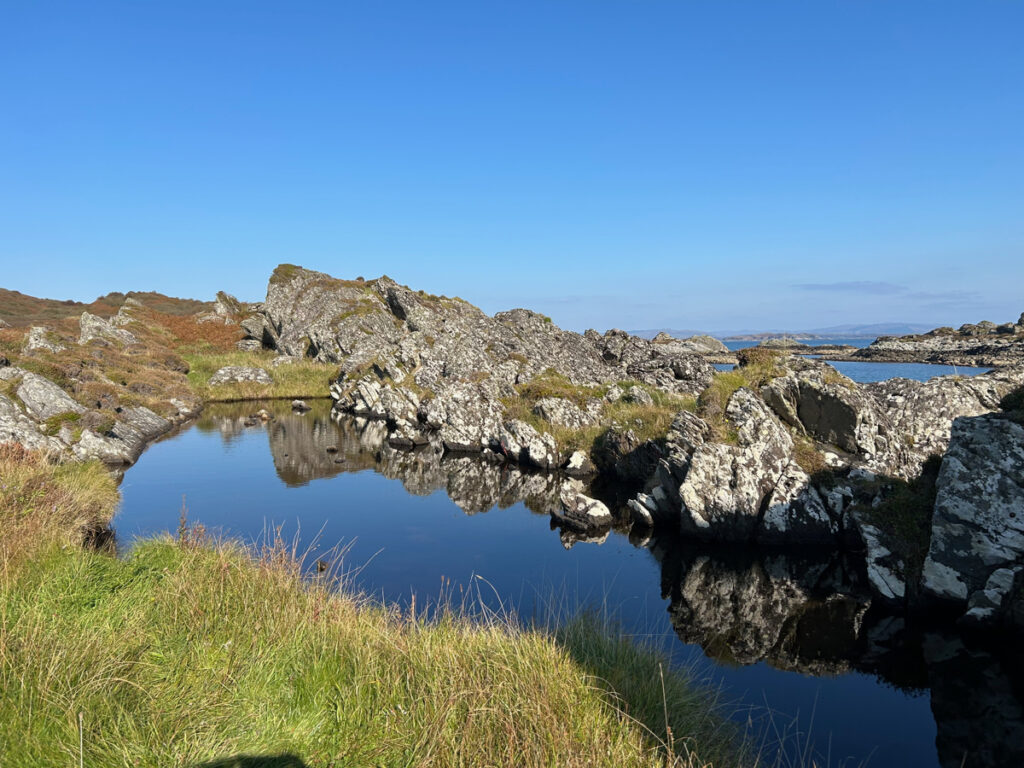
I don’t think even one of the early monks, returning from some dreaded but necessary excursion to the outside world, could have made it much faster than I did to the beautiful old beehive cells, perched as they are on a hillside overlooking the sea with all its scattered islets and skerries. How glorious just to stand inside and gaze up at the domed roof, now incomplete but framing a serene September sky. These structures must have been part of the earliest monastic settlement here, which tradition tells us was founded by St Brendan the Navigator in 542 AD – over 20 years before St Columba arrived on Iona.
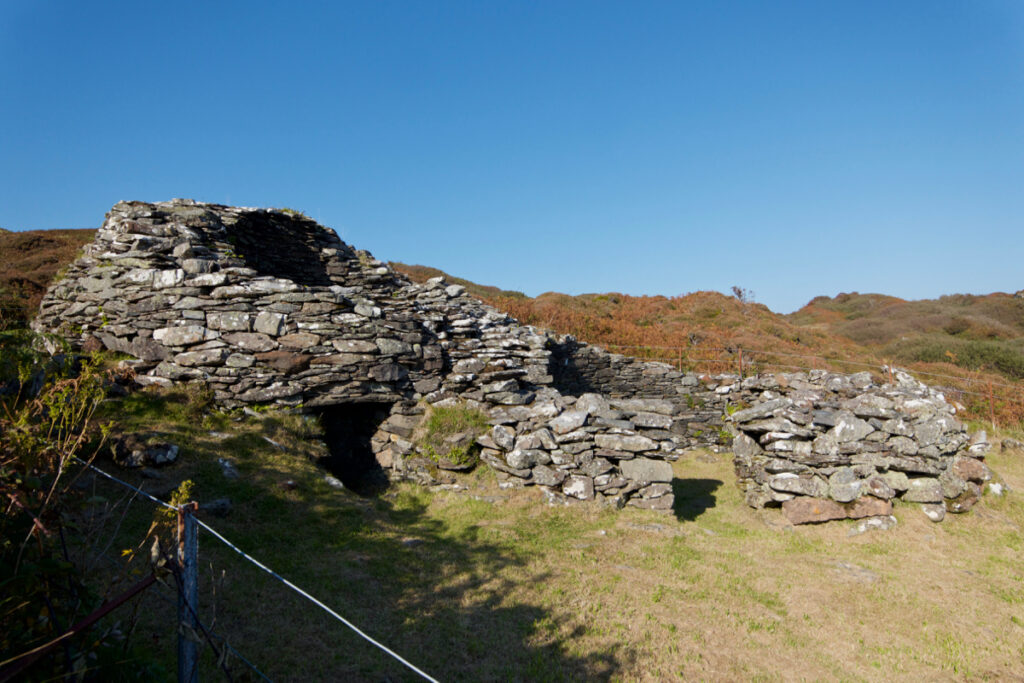
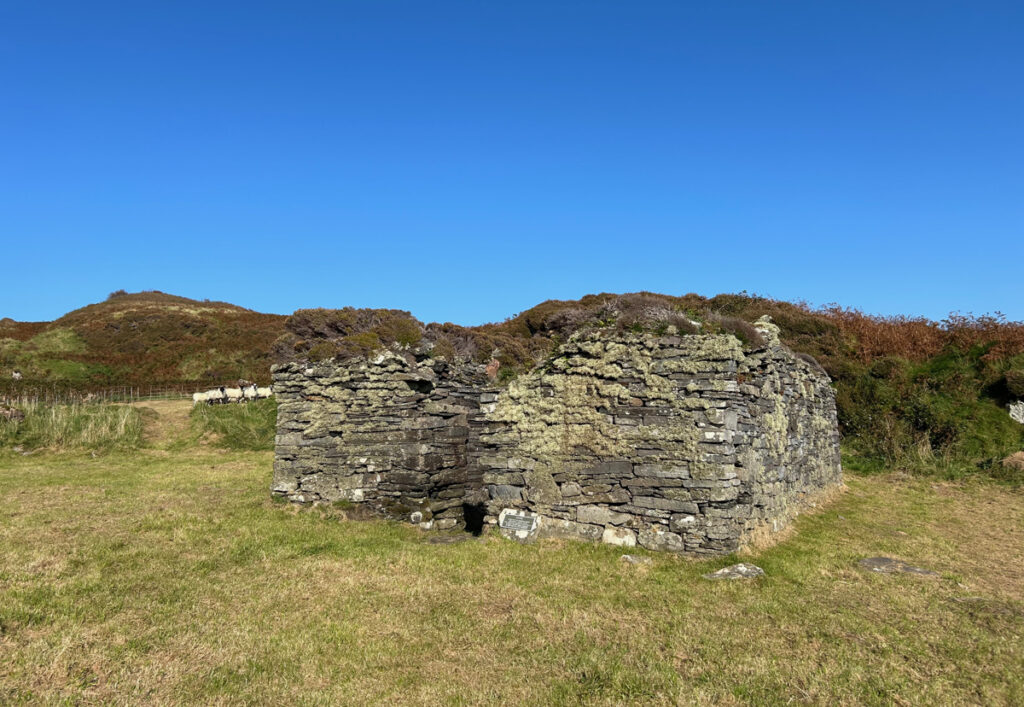
Just up from here, over a low ridge and onto more level ground, the walls of the old chapel came into view. Roofless but atmospheric, this building is as square as the beehive cells are round, the upper surfaces of its well-cut stones colonised by heather, ferns and lichen. Nature, left to her own devices, will always set about softening the edges.
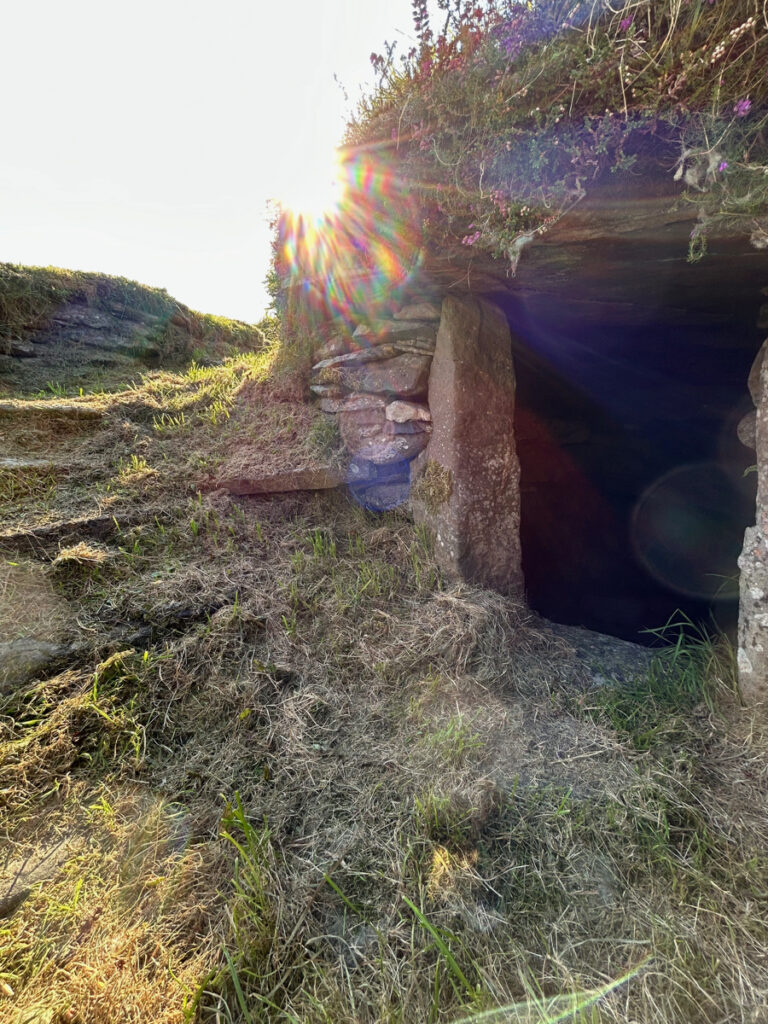
I paused for a few minutes to sit and gaze into the souterrain, a small, damp, stone-lined chamber that has been dug into the bank below the chapel. This is one of the most enigmatic features on Eileach an Naoimh; just big enough to contain a person crouching or lying, and damp with mosses and ferns at all times of year, its original purpose is unknown. The capstone, together with the two uprights that form the entrance, are reminiscent of an age much earlier than the medieval monastery.
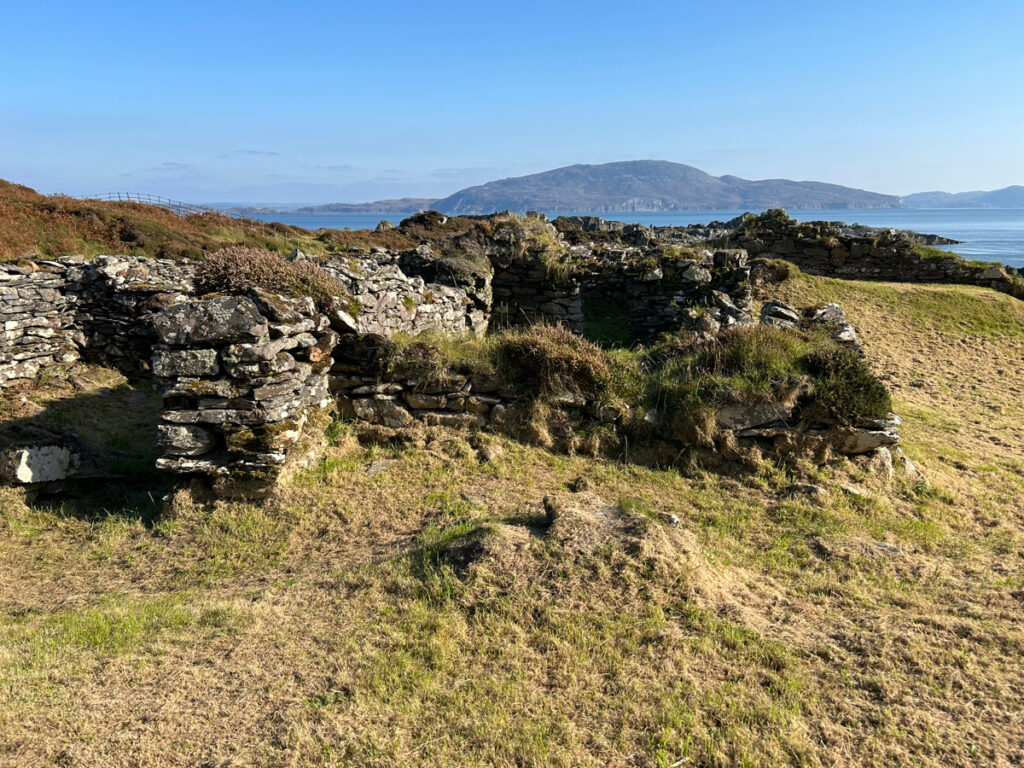
Past the ruins of comparatively recent dwelling houses, put up when farmers came here with livestock to scratch a living from the rough ground, to the old walled graveyard, slightly hollow in profile, its furthest border sloping up to the ridge beyond. Few gravestones are visible now, and you wonder whose they are: how long have they lain here, and what were their lives like. The peace here was extraordinary; a breeze from the sea stirring the last buttercups, and from the rowan trees, heavy with scarlet berries, robins whistled their soft autumn songs.
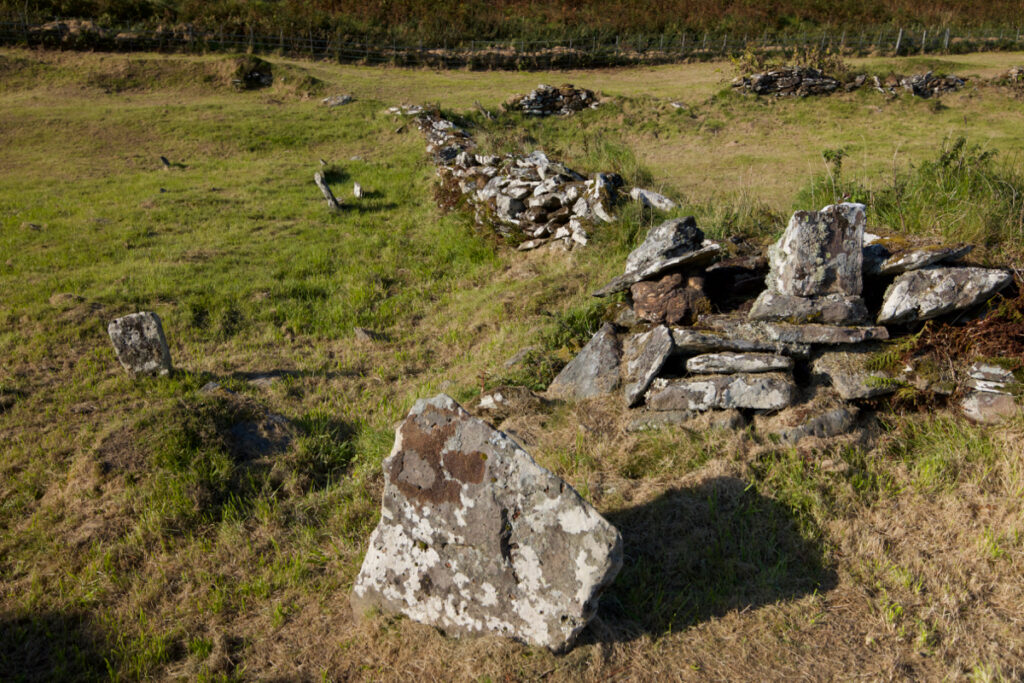
Tea was brewing on Farsain, but I couldn’t turn back before running up to the little flat clearing with its cross-marked stone, said to mark the grave of Eithne, St Columba’s mother. From here, the entire settlement of Eileach an Naoimh is laid out at your feet, and beyond it the sea, in all directions.
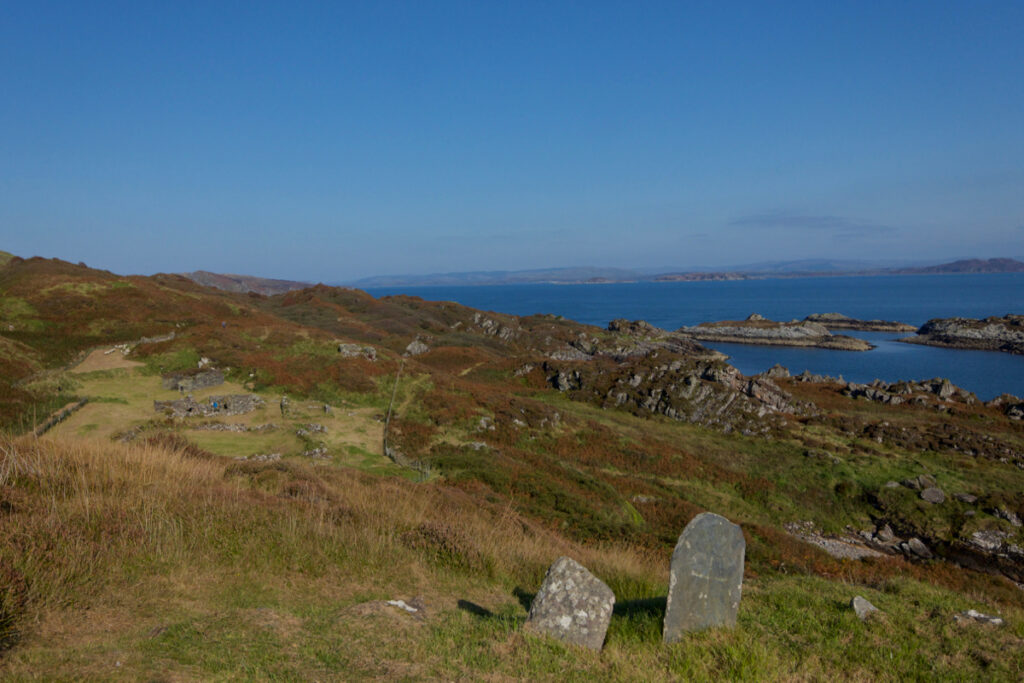
I was reluctant to leave, but glad also, because I like knowing that for most of the time this place is a natural sanctuary, free of humans and human interference.
A leisurely sail back, past the other islands of the Garvellachs – A’ Chuli, Garbh Eileach, Dun Chonnuill – then home through Cuan Sound, a narrow neck of water between Seil and Luing, which was boiling vigorously with currents that grabbed at the boat and tried to turn her around.
We skirted the little island of Torsa, which is almost joined to Luing at low tide, and crossed to Craobh marina with the sun sinking at our backs, not with the golden glamour of the past few nights but dissolving into a veil of thin cloud that seemed to hint at rain. It was the equinox: maybe our short September ‘summer’ was already coming to an end. And now, a week or so later, it’s a cool, still and damp evening with that strange dim light that makes the fallen beech leaves glow, and the robins are singing – just as they must be on Naoimh – before they go to bed.
With thanks to Tony of Farsain Cruises
Photos copyright Colin and Jo Woolf
More posts about the Garvellachs:
- St Brendan and the Garvellachs
- The Garvellachs: just below the surface
- And on RSGS’s website: The Garvellachs



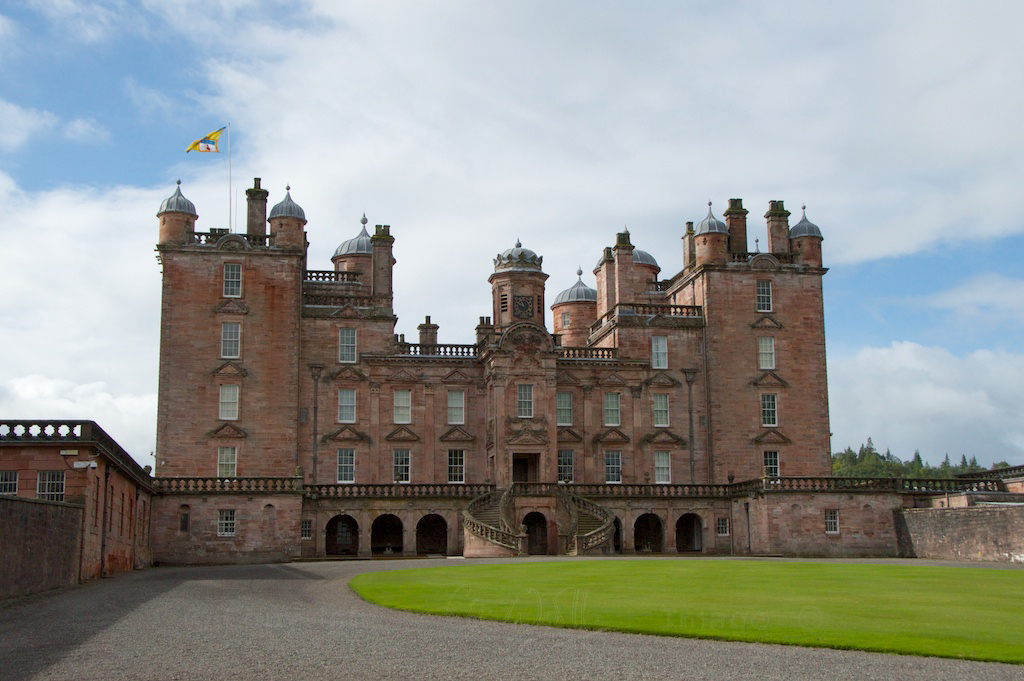
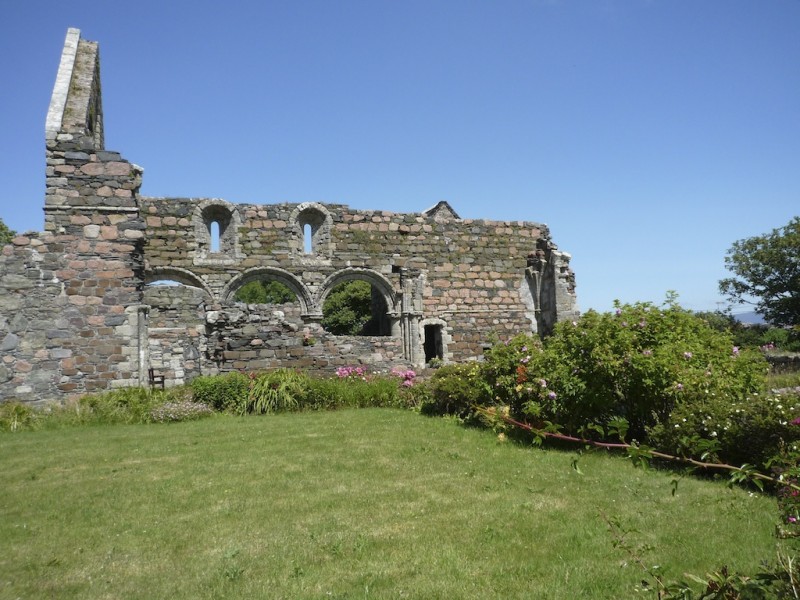
3 Comments
Adele Marie
So beautiful thank you for sharing.
Bob Hay.
What a beautiful trip Jo and nice way to end the summer. When I saw your heading I thought your interest had been sparked by this recent discovery.
https://theconversation.com/snowball-earth-how-we-discovered-unique-scottish-rocks-record-when-earth-was-first-encased-in-ice-236923
Bob.
Jo Woolf
Thank you, Bob – yes, it was so special. Thanks for the link – yes, I saw the news of that discovery. Incredible that such a unique ‘snapshot’ of geological time is only preserved (so far as we know) on Garbh Eileach.